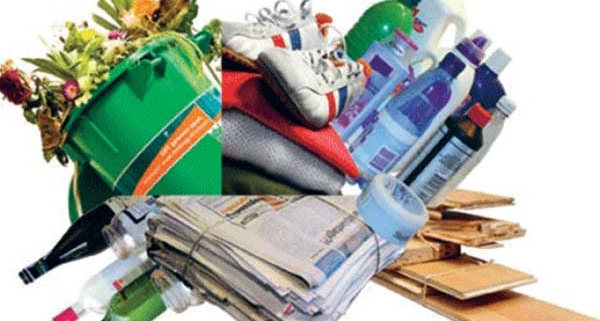The treatment of solid waste can effectively dispose of waste, reduce the discharge of final waste, reduce the environmental pollution to the area, prevent the spread of secondary pollution, and at the same time achieve low total treatment cost and high resource utilization efficiency. And how is the path and classification of solid waste generated?
The path of social material flow and solid waste generation, which maintains all activities in human society, is in a state of dynamic equilibrium and follows the law of conservation of mass. Get two inspirations:
1. All human activities, relative to the external environment, are simply the development and utilization of natural resources, and eventually return the resources to the environment in the form of waste. This “utilization and return” of resources is often in an alternating state. In the production and consumption of products, all forms of waste are produced. Some of these wastes are recycled and reused in production and consumption, and are returned in the form of waste just in the same amount as the raw materials developed in the environment. In the natural environment, a closed circulation system is formed.
2. In modern society, every aspect of human activities produces wastes of various states, from the development of raw materials in the environment to the utilization of products, without exception. The way to reduce waste production is to reduce the consumption of raw materials per unit of product and reduce the development of raw materials. Solid waste is an integral part of the social logistics system and follows the above rules.
The classification of solid waste is based on the route and nature of its production.
In developed countries, solid waste is divided into four categories: industrial waste, mining waste, agricultural waste and municipal waste. In the “Fixed Waste Management Law” enacted in China, solid waste is divided into two types: solid waste (dust) and municipal waste.
Industrial solid wastes containing hazardous ingredients are classified as a “hazardous waste” sub-category because of their particular hazard to the environment and humans.
Solid waste treatment management measures
Solid waste treatment is done by physical means (such as crushing, compression, drying, evaporation, incineration, etc.) or biochemical actions (such as oxidation, digestion and decomposition, absorption, etc.) and pyrolysis gasification to reduce its volume and accelerate its The process of natural purification. Let’s take a look at the main measures for solid waste pollution and the use of solid waste resources.
The main measures for solid waste pollution and utilization of solid waste resources are:
1. Reform the production process and reduce waste: improve product quality and produce products with long service life so that the articles do not become waste quickly. Use concentrate to reduce waste emissions during production. For example, in the beneficiation process, the iron ore grade can be increased, and the slag-forming agent and coke can be added less, thereby reducing the discharge of the blast furnace slag. After adopting this method in industrial advanced countries, the blast furnace slag emissions can be reduced by more than half.
2. Development of material recycling technology: reforming traditional processes, developing material recycling processes, making the waste of the first product a raw material for the second product, and making the second product waste a third product. Raw materials, etc., leaving only a small amount of waste into the environment, so that economic, environmental and social benefits can be achieved.
3. Incorporate solid waste into the scope of resource management: formulate a solid waste resource policy and encourage the use of solid waste. A solid waste resource system was established to include wastes with clear uses into resource allocation plans; wastes that were temporarily unavailable could be stored as backup resources.
4. Formulate regulations for the management of solid waste: The policies concerning the pollution of solid waste and the use of solid waste are reflected through legislative means. Some countries have solid waste management regulations and environmental standards.



